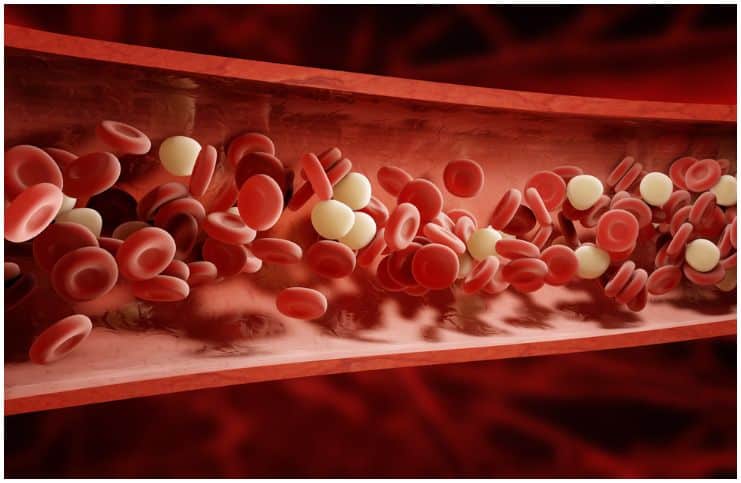Rutin Health Benefits and Adverse Effects:
Rutin belongs to a class of plant secondary metabolites named flavonoids which are also known as sophorin, rutoside, and quercetin-3-rutinoside. It’s a biologically active flavonoid, and its bioavailability is influenced by the absence or presence of glucosides.
The name ”rutin” comes from ”Ruta graveolens,” the scientific name of the herb usually known as ”rue.” In the 1940s, it was called vitamin P, even though it’s not a vitamin.
Other flavonoids, such as hesperidin and quercetin, are very similar in composition to this compound. Many scientists have come to agree that quercetin and rutin, in fact, “work together” by complementing each other.
Health benefits of rutin
Blood clot prevention
It does so by inhibiting a compound called protein disulfide isomerase (PDI), which plays an important role in blood clot formation.
Although some clotting is good (it keeps us from bleeding to death when we get cut), too much clotting can cause a build-up in our blood vessels and make it harder for blood to pass through.
Antioxidant properties
Antioxidants are plant chemicals that help protect the body from cellular damage caused by free radicals.
Since free radicals turn LDL cholesterol into plaques, blocking arteries and preventing normal blood flow (which leads to atherosclerosis), rutin may help reduce arterial blockage, possibly decreasing the risk of stroke and heart disease. Furthermore, free radical damage can accelerate the skin’s wrinkling and sagging.
Allergies
Many studies have established that this powerful nutrient is able to inhibit the discharge of histamine, an active substance found in a great variety of living organisms. Histamine is secreted by mast cells, which set off frequent allergic reactions, including the stuffy nose.
Cancer treatment
It is also used to prevent the side effects of chemotherapy called mucositis. This is a painful disease marked by swelling and ulcer formation in the mouth or lining of the digestive tract.
Oral mucositis leads to several problems, including pain, increased risk of infection due to open sores in the mucosa, and nutritional problems as a result of the inability to eat.
Meniere’s disease
According to the Physicians’ Desktop Reference, this flavonoid can be used to treat Meniere’s disease, a rare disorder that affects the inner ear. Meniere’s disease can cause tinnitus, vertigo, hearing loss, and a feeling of pressure deep inside the ear.
Bone health
Approximately 10 million Americans over the age of 50 have osteoporosis, and another 34 million have low bone mass.
This potent flavonoid was shown to prevent decreases in both distal and total petaphyseal femoral mineral density by slowing down resorption and increasing osteoblastic activity, which was caused by the removal of the ovaries.
Lowers blood pressure
Protects LDL (bad cholesterol) from being oxidized into potentially harmful cholesterol oxides, which can also build up in blood vessels. Higher levels of LDL are associated with hypertension.
Inflammatory bowel disease
More than 3 million U.S. adults may have inflammatory bowel disease, according to a new government estimate. Preliminary research indicates that rutin may help treat inflammatory bowel disease.
Varicose veins
Up to 60 percent of people in the United States have varicose veins. For most individuals, it is a cosmetic issue, but for some people, varicose veins may cause pain.
According to the University of Maryland, there are oxerutins, a group of chemicals in rutin, that have been studied in women with varicose veins in their legs.
Osteoarthritis
It is estimated that at least 20 million adults in the U.S. suffer from this often debilitating disease.
A 2015 study at Nutrition and Health Research, Switzerland, concluded that this compound notably slowed down the progression of spontaneous osteoarthritis lesions in guinea pigs.
Side effects of rutin
There are no serious side effects, but some people may rarely experience the mild side effects of nausea or a mild headache.
However, supplementing with rutin can prevent iron, calcium, and magnesium from being absorbed from food, hence this supplement should not be taken with mineral supplements or with meals. In addition, this supplement should not be taken during pregnancy.
Rutin food sources
You can find this flavonoid in the majority of fruits and vegetables, but in large quantities in – buckwheat, green and black tea, apple peels, berries (mulberry, ash tree fruits, Aronia, berries, cranberries), onions, tomato, carrot, sweet potato, asparagus, figs, the rind of citrus fruits (orange, lemon, grapefruit, and lime), apricots, prunes, rose hips, the core of green peppers, and cherries.
READ THIS NEXT:
References http://www.ncbi.nlm.nih.gov/pubmed/22565308 https://www.ncbi.nlm.nih.gov/pmc/articles/PMC2679321/ https://www.ncbi.nlm.nih.gov/pubmed/25219641 http://www.ncbi.nlm.nih.gov/pubmed/24184193



